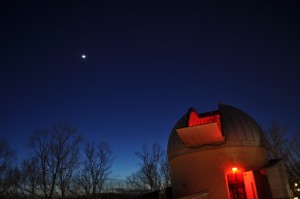Geminids
The final major meteor shower of every year (unless one surprises us!) is always the December Geminid shower, often producing 50 or more meteors per hour. It is a beloved shower, because, as a general rule, it’s either the August Perseids or the December Geminids that give us the most prolific display of the year. Best of all, the new moon guarantees a dark sky on the peak night of the Geminid shower (mid-evening December 13 until dawn December 14). But the nights on either side of the peak date should be good as well. Unlike many meteor showers, you can start watching the Geminids by 9 or 10 p.m. local time. The peak might be around 2 a.m. local time on these nights, because that’s when the shower’s radiant point is highest in the sky as seen around the world. With no moon to ruin the show, 2012 presents a most favorable year for watching the grand finale of the meteor showers. Best viewing of the Geminids will probably be from about 1 a.m. to 3 a.m. on December 14.
January’s Full Moon is the “Old Moon”, “Wolf Moon”, “Ice Moon”, “Moon after Yule”, or “Paush Poornima”

Dr. Michael Summers and Implications of Finding Alien Life in Research Hall Science Showcase. 1st talk at 6PM, same talk at 6:45PM, observing starts at 6;30PM until 8PM.
Campus Map – The George Mason University Observatory at the Fairfax Campus building Research Hall formerly known as Research I.

